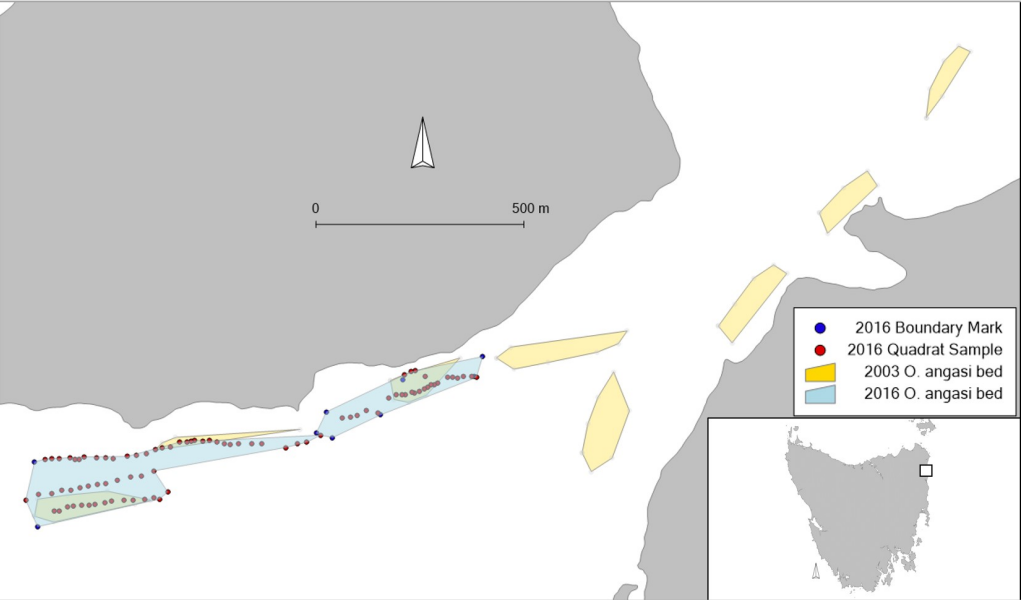Background
A commercial dive fishery has operated for the native flat oyster (Ostrea angasi) since approximately 1985 in Georges Bay, Tasmania. The fishery was managed principally through the allocation of half yearly or yearly permits until 2007 when a formal TACC was introduced.
The harvest of native flat oysters is limited to large, easily accessible oyster beds in Georges Bay in the northeast of the Tasmania. Historically found extensively in the estuaries and bays of its range in Southern Australia, less then 10% of native oyster reefs remain due to a combination of destructive fishing practices, overfishing and changes to estuarine conditions (Gillies et al. 2017). In 1991, a program to permit a small number of participants to harvest native oyster from Georges Bay and on-grow them to market size in aquaculture facilities was implemented, however the program ended in 1993 in preference for direct harvesting from Georges Bay (Mitchell et al. 2000).




